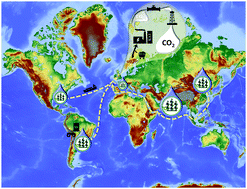Can BECCS deliver sustainable and resource efficient negative emissions?
Abstract
Negative emissions technologies (NETs) in general and bioenergy with CO2 capture and storage (BECCS) in particular are commonly regarded as vital yet controversial to meeting our climate goals. In this contribution we present a whole-systems analysis of the BECCS value chain associated with cultivation, harvesting, transport and conversion in dedicated biomass power stations in conjunction with CCS, of a range of biomass resources – both dedicated energy crops (miscanthus, switchgrass, short rotation coppice willow), and agricultural residues (wheat straw). We explicitly consider the implications of sourcing the biomass from different regions, climates and land types. The water, carbon and energy footprints of each value chain were calculated, and their impact on the overall system water, carbon and power efficiencies was evaluated. An extensive literature review was performed and a statistical analysis of the available data is presented. In order to describe the dynamic greenhouse gas balance of such a system, a yearly accounting of the emissions was performed over the lifetime of a BECCS facility, and the carbon “breakeven time” and lifetime net CO2 removal from the atmosphere were determined. The effects of direct and indirect land use change were included, and were found to be a key determinant of the viability of a BECCS project. Overall we conclude that, depending on the conditions of its deployment, BECCS could lead to both carbon positive and negative results. The total quantity of CO2 removed from the atmosphere over the project lifetime and the carbon breakeven time were observed to be highly case specific. This has profound implications for the policy frameworks required to incentivise and regulate the widespread deployment of BECCS technology. The results of a sensitivity analysis on the model combined with the investigation of alternate supply chain scenarios elucidated key levers to improve the sustainability of BECCS: (1) measuring and limiting the impacts of direct and indirect land use change, (2) using carbon neutral power and organic fertilizer, (3) minimising biomass transport, and prioritising sea over road transport, (4) maximising the use of carbon negative fuels, and (5) exploiting alternative biomass processing options, e.g., natural drying or torrefaction. A key conclusion is that, regardless of the biomass and region studied, the sustainability of BECCS relies heavily on intelligent management of the supply chain.



 Please wait while we load your content...
Please wait while we load your content...